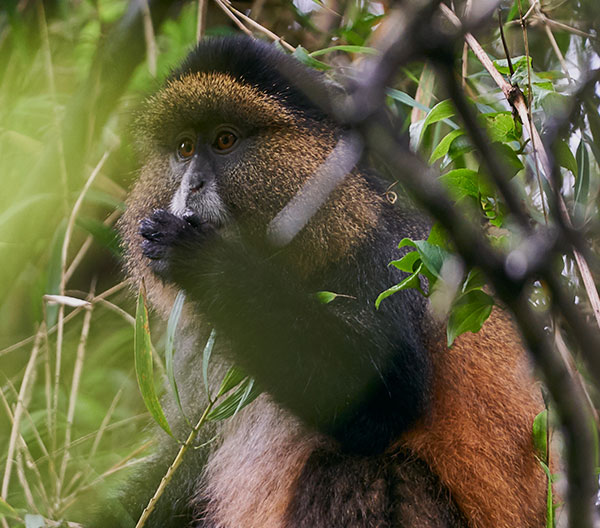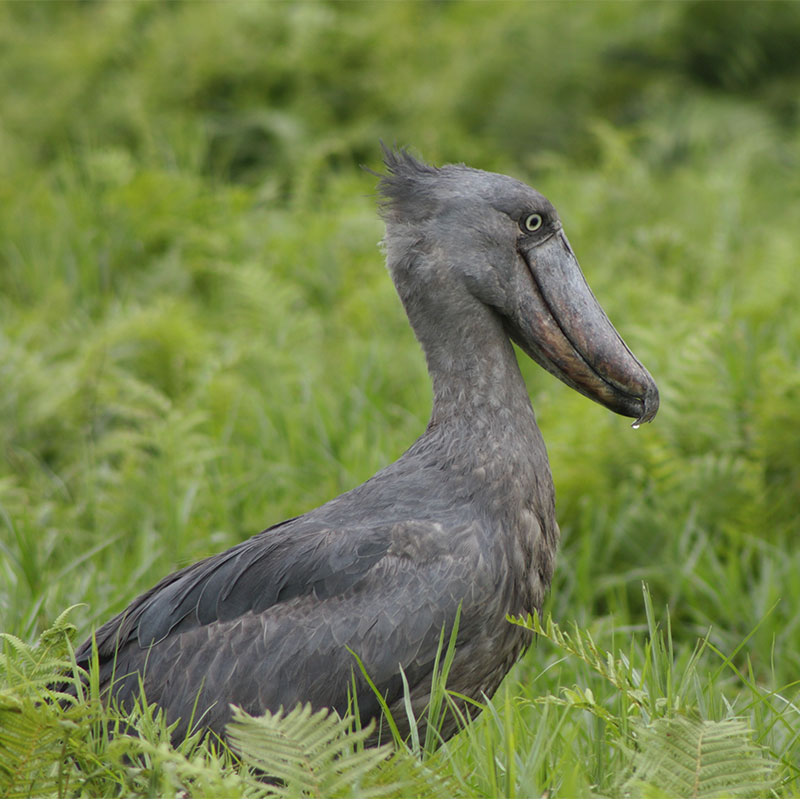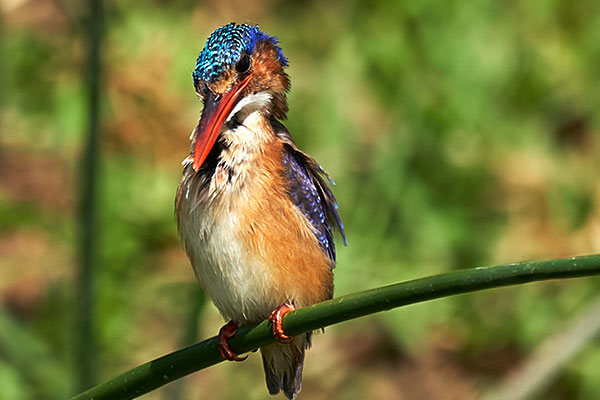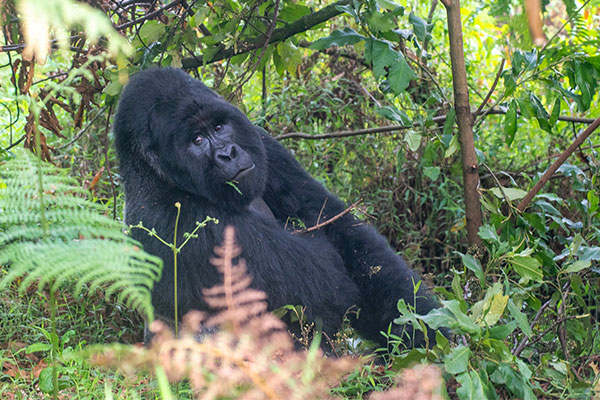Day 1: Arrival in Uganda
We shall arrive at Entebbe International Airport and check-in at the lodge. If time allows, we shall bird in the lodge gardens or in the vicinity at Entebbe botanical gardens. Overnight at the lodge.
Day 2: Shoebill search in Mabamba
After early morning breakfast, we shall drive to the magnificent marshes on Lake Victoria for the shoebill search. Mabamba is the place to be for this Africa’s number one sought-after bird. Mabamba wetland is an important bird area protected by the community and is home to a number of shoebills. This wetland boasts of other fascinating bird species both on the shore as well as in the marshes. Some include; Papyrus Gonolek, Eurasian and African Marsh Harriers, Blue-breasted Bee-eater, Malachite and Pied Kingfishers, Blue-headed Coucal, and Winding Cisticola among others. After maneuvering the marshes, we shall enjoy our lunch and drive back to the lodge.
Day 3: Transfer to Lake Mburo National Park
After breakfast, we shall head southwest to Uganda’s smallest savanna park. Lake Mburo NP is a savanna park with varied habitats ranging from forests, savanna woodlands and grasslands, lakes, and wetlands among others. These habitats are home to different kinds of wildlife ranging from zebras, eland, impala, topi, leopard, giraffe, and hippo to mention a few alongside small beautiful bird species which are very much interesting in our case. Some of the usual suspects here include; Lilac-breasted Roller, Emerald and Blue-spotted Wood-Doves, African Finfoot, White-backed Night-Herons, Crested, Black-collared, Red-faced and Spot-flanked Barbets, Grey Hornbill, White-winged Tit, and Black-bellied Bustards among others. Overnight at the lodge.
Day 4: Birding in Lake Mburo National Park
After breakfast, we shall carry packed lunch and head out in a game drive for a birding session. This will be a full day’s activity though with a boat ride break somewhere in the middle. Lake Mburo NP boasts of more than 350 bird species and a good birding day will give us an excellent bird list on the top of the big and small mammals. Return back to the lodge
Day 5-8: Transfer to Bwindi Impenetrable National Park for four days
After breakfast, we shall transfer further south to the gorilla highlands of Bwindi Impenetrable national park. This park is ranked as Africa’s number one birding destination with a list of more than 330 birds species including 23 of the 33 Albertine rift endemics and it is also home to the endangered mountain gorillas.
We shall first stage in the Ruhija sector, a magnificent part of Bwindi, and birding here will give us a good list of the Albertine rift endemics among other forest inhabitants.
One can never be in this forest and fail to visit the gentle giants and therefore, a whole day will be dedicated to the visit to the endangered mountain gorillas. Gorilla tracking is a full-day activity and requires a certain level of physical fitness as the terrain of the area is challenging in the hilly Kigezi highlands.
We shall also head to Buhoma, Bwindi’s lowest point where the main offices are located, and shall have a birding walk through the main trail.
This offers excellent birding opportunities and some of the species expected include; Handsome Francolin, Grauer's Broadbill, Rwenzori Turaco and Batis, Masked Apalis, Stripe-breasted Tit, Strange Weaver, Dwarf, and Thick-billed Honeyguides, Regal, Purple-breasted and Northern Double-collared Sunbirds, Kakamega, Red-tailed and Plain Greenbuls, Red-faced Woodland Warbler, Equatorial Akalat, Grey-throated, Yellow-billed and Yellow-spotted Barbets, Grey-winged, Blue-shouldered, and Red-capped Robinchats, Narina and Bar-tailed Trogons, Red-throated Alethe, Mountain Illadopsis, Petit’s Cuckoo-shrike, Kivu and Orbelander’s Ground-thrushes, Western Green Tinkerbird, Willard’s Boubou, Short-tailed Warbler, Black-faced Rufous Warbler, Elliot’s Woodpecker, Chapin’s and Cassin’s Flycatchers among many others. Overnight in Ruhija and Buhoma lodges
Day 9: Transfer to Queen Elizabeth National Park
After breakfast, we shall drive northwards towards the equator to the savannahs of Queen Elizabeth NP. This park has different and unique habitats that boast a very long list of birds with an average of 612 species within one park. It also gives us good opportunities for mammal sightings with an average of 95 species. Some of the exciting views in Queen Elizabeth include; the famous Tree climbing lions of Ishasha, leopard, buffalo, elephant, Uganda kob, waterbuck, Bushbuck, Hippo, and reptiles like the Nile crocodile and monitor lizards, Agama, and many others. Overnight at the lodge
Day 10: Full day birding in the park
After early morning breakfast, we shall head out for a morning game drive, birding in the plain savannas of Kasenyi. This is a haven for raptors with a variety of vultures like the Lappet-faced, Hooded, and White-backed. Other raptors include; Bateleur, Black-chested and Brown Snake-eagles, Martial Eagle, African Harrier-Hawk, Pallid and Montagu’s Harriers, Black and Black-shouldered Kites, Wahlberg’s and Long-crested Eagles, among others. Other possible sightings include the; Flappet and Rufous-naped Larks, African and Plain-backed Pipits, Yellow-throated Longclaw, Temminck’s Courser, Senegal, Crowned and African Wattled Lapwings, Kittlitz’s Plover, Red-necked Spurfowl, and Black-headed Gonolek among others.
We shall later head back to the lodge for lunch or have our packed lunch boxes as we wait for an afternoon boat ride on the Kazinga channel. This natural channel that connects Lakes George and Edward has an excellent showoff of wildlife, birds inclusive and some of the species expected here are; African Spoonbill, Pied Kingfisher, Great, Intermediate, Little and Cattle Egrets, Water Thick-knee, African Fish Eagle, Hamerkop, Egyptian Goose, Sacred and Hadada Ibis, Great White and Pink-backed Pelicans, Long-tailed and Great Cormorants, Yellow-billed, Open-billed, and Marabou Storks, Black Crake, Grey-headed, Malachite and Woodland Kingfishers, and Yellow-billed Oxpeckers to mention a few. During the right time, Greater and Lesser Flamingos are also a stunner. Overnight back at the lodge.
Day 11: Transfer from Queen to Kibale National Park
This day, we shall travel and cross the equator to the beautiful Tooro Kingdom. This region is home to Kibale National Park among many other parks, which is famously known as the Primate capital of the world. Kibale is home to over 5000 chimpanzees and this makes it the right place to visit in case one is interested in seeing man’s closest cousins. This will be our next destination and is not only known for primates but also the availability of unique bird species like the Green-breasted Pitta. We shall bird on our way there as well as in the forest for species like the; Afep and White-naped Pigeons, Black-Bee-eater, Great Blue, Ross’s and Black-billed Turacos, Yellow-spotted, Yellow-billed, and Hairy-breasted Barbets, Red-headed Malimbe, Fraser’s Flycatcher-Thrush, Yellow-mantled Weaver, Blue-breasted and Shining Blue Kingfishers among others. Overnight at the lodge.
Day 12: Chimpanzee Tracking
After breakfast, we shall gather at the park headquarters for a briefing on the dos and don’ts of chimp tracking prior to the visit to man’s closest cousins. We shall leave with packed lunches as the chimps may decide our fate with them to be a long one.
We shall then head out there and enjoy the presence of different primates that give Kibale the name as the world’s primate capital. Some of the other primates in the forest include; the Olive baboon, Blue, Red-tailed, L’hoest Monkeys, Uganda Mangabey, Mantled Guereza, and Red-Colobus Monkeys among others.
There are also chances of viewing buffalos, elephants, duikers, civets, and jackals among other big mammals. After the morning chimp tracking, we shall have a birding walk in the beautiful Bigodi wetland that provides excellent opportunities for birding and some of the species there include White-spotted Flufftail, Shining Blue Kingfisher, White-winged Warbler, Western Nicator, Papyrus Gonolek, and the Yellow-billed Barbet to mention a few. Overnight at the lodge in Fort Portal.
Day 13: Birding in Semuliki National Park
After breakfast, we shall have parked lunch boxes and head to the beautiful Rwenzori ranges in Semuliki National Park. This park is a hidden treasure with volcanic evidence as hot springs on top of a unique primates list. Semuliki boasts of more than seven primates including special ones like Debrazza’s, Dent’s, and Red Colobus Monkeys. This is a lowland forest that is the most easterly extension of the central African Ituri forest. This gives it a special habitat with unique species that give Semuliki a slogan as “a birders’ haven”. Most of the species here can only be seen here in the whole of East Africa. Some of the bird species include; African Piculet, Red-rumped Tinkerbird, Banded Prinia, Hartlaub’s Duck, Orange-cheeked waxbill, African Wood-Owl, Blue-breasted Kingfisher, Yellow-throated Cuckoo, White-throated Blue Swallow, LeafLove, Nkulengu rail, Yellow-throated Nicator, Red-bellied, Crested, Blue-bellied and Red-headed Malimbes, Chestnut-breasted Nigrita, Lemon-bellied Crombec, Maxwell’s Weaver, White-crested, Piping, White-thighed, Red-billed Dwarf, Black Dwarf, and Black-casqued Wattled Hornbills among many others. Overnight in Fort Portal
Day 14: Transfer to Masindi
This day will be more of a transfer and this will be the longest distance driven on this tour. It will be less of birding as we have to catch up with time but we shall have a few birding opportunities along the swamps, bridges, marshes, and sugar cane plantations on the route. Some of the possible sightings include; the Great blue and Ross’s Turacos, Woodland Kingfisher, Splendid and Purple Starlings, Long-crested Eagle, Banded and Brown snake eagles, White-winged Warbler, Vieillot’s Black and Village Weavers, Blue-headed Coucal, White-rumped and Little Swifts, Speckled Mousebird among many others that nature and luck will provide. Overnight in Masindi.
Day 15: Birding the Royal Mile and transfer to Murchison Falls NP
After early morning breakfast, we shall head out with parked lunches to the famous Royal Mile of the Great Omukama Kabalega. This is a historical site that was normally a relaxation spot for the ancient King of Bunyoro Kingdom. This is not only a hotspot for culture but also one of the top birding destinations in Uganda with a very assorted array of top-notch species in Central and East Africa. A short drive through the sugarcane plantations will take us to the huge short but wide trail known as the Royal Mile. Some of the suspects include; The Dwarf and Chocolate-backed Kingfishers, Ituri Batis, Forest Robin, Fire-crested Alethe, Chestnut-capped Flycatcher, Rufous-crowned Eremomela, Uganda Woodland Warbler, White-thighed, and Black-and-White casqued Hornbills, Cabanis’s Bunting, Grey-headed Oliveback, Marsh Tchagra, Yellow-crested, and Brown-eared Woodpeckers, Cassin’s and Sabine’s Spinetails, Narina Trogon, Honeyguide and Spotted Greenbuls, Forest and Sooty Flycatchers, White-spotted Flufftail, Rufous-crowned Eremomela, Crowned Eagle, Ayre’s and Cassin’s Hawk-Eagles, and Crested Guineafowls, to mention a few.
After our packed lunch boxes, we shall head out and drive into the Albertine rift escarpment to the beautiful savannas of Murchison falls National Park. En route are chances of the Black-billed Barbet, Northern Red and Yellow Bishop, Cut-throat Finch, Dark-chanting Goshawk, Namaqua Dove, Cliff chat, Singing Cisticola, and Cinnamon-breasted Rock Bunting among others. Overnight at the lodge.
Day 16: Morning game drive and afternoon boat cruise in Murchison Falls National Park
After breakfast, we shall head out with our packed lunch to the Borassus savannas of Murchison Falls NP. This is a very unique park, being Uganda’s largest conservation area but also a place that offers amazing wildlife views ranging from big mammals to small beauties like the Northern Crombec (a bird). Some of the mammal sightings include; the big four of the African big five mammals (elephant, buffalo, lion and leopard), Nubian Giraffe, Lelwel’s Hartebeest, Oribi, Warthog, Patas Monkey, Uganda Kob, Jackals to mention a few.
Murchison falls NP boasts of more than 400 bird species and some of the possible sightings include; Rattling and Foxy Cisticola, Black-bellied and Denham’s Bustards, Abyssinian Ground Hornbill, Red-necked Falcon, Grey and Dicknison’s Kestrels, Martial Eagle, White-backed ad Ruppell’s Griffon Vultures, Short-toed and Black-chested Snake-Eagles, Secretary Bird, Shoebill, Silverbird, Blue-naped Mousebird, Swallow-tailed and Northern Carmine Bee-eaters, Fawn-breasted and Common Waxbills, Black-bellied and Red-billed Firefinches, Heuglin’s and Crested Francolin, Black-billed Wood-Dove, Vinaceous and Mourning Collared Doves, Northern Red Bishop, and Helmeted Guineafowl among others.
We shall enjoy our parked lunches after the long game drive birding and head to the jetty for an afternoon boat cruise on the Victoria Nile to the bottom of Murchison Falls. There are also amazing wildlife sightings of big mammals like elephants, hippos, waterbucks, crocodiles, and a python on lucky days. There is also a good array of water birds like the Shoebill, Goliath, Purple and Grey Herons, Senegal and Water Thick-knees, Egyptian Plover, Black-crowned Night Heron, Wire-tailed Swallow, Red-throated Bee-eaters, African Darter, Giant and Malachite Kingfishers, Bat hawk as well as Pel’s Fishing-Owl to mention a few. The spectacular views of arguably the world’s most powerful falls will crown the day for us. Overnight back at the lodge.
Day 17: Drive back to Entebbe and departure
After breakfast, we shall drive through the park as we head back to the city where we shall have our last moments at the shores of Lake Victoria in Entebbe. We shall briefly stop at Kanio-Pabide and try out our luck forPuvell’s Illadopsis. Depending on our flights, we can visit several places around the airport’s neighborhood such as the botanical gardens, or the Uganda Wildlife, Conservation and Education Centre (UWEC).








